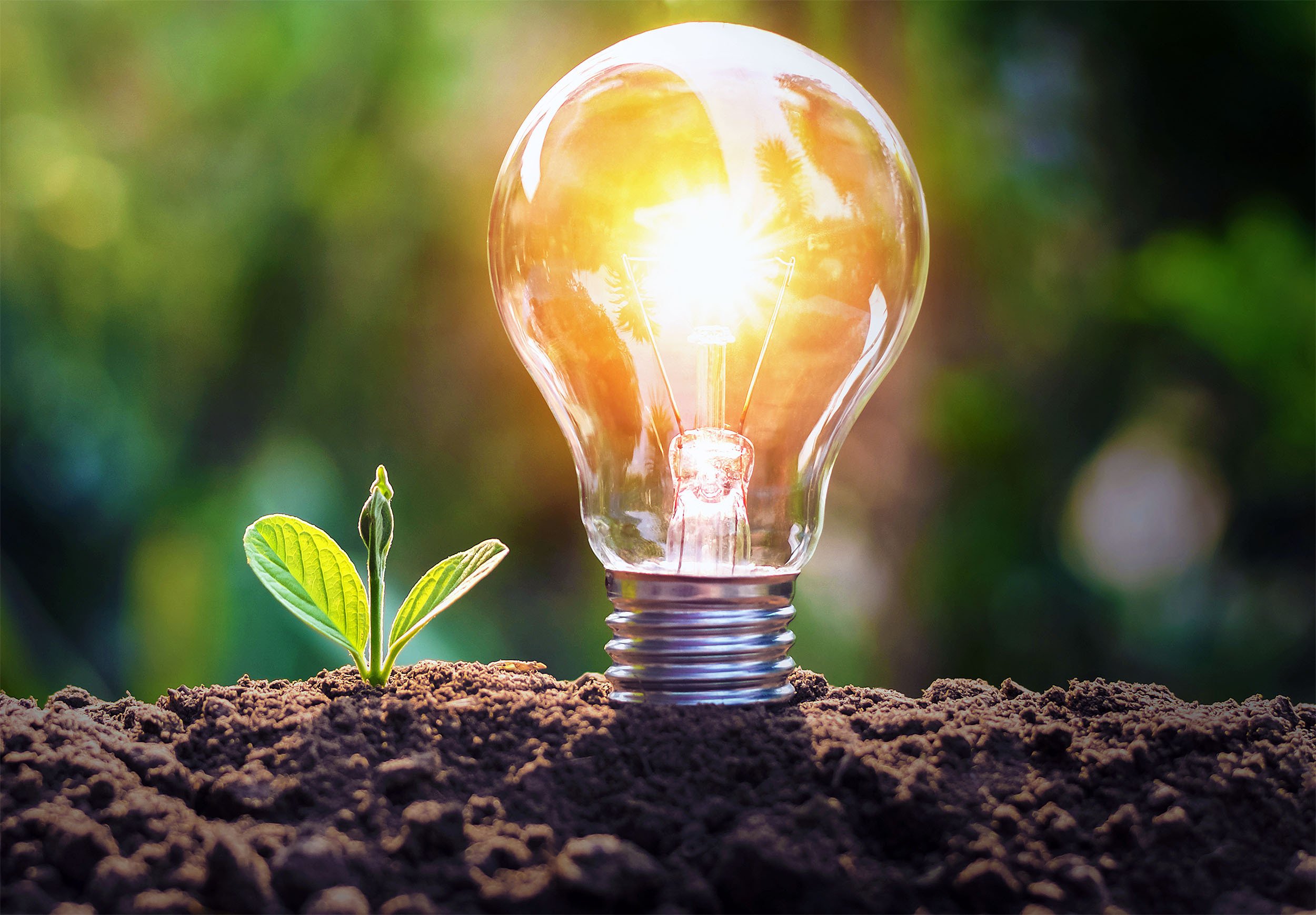- cross-posted to:
- hackernews@lemmy.smeargle.fans
- hackernews@derp.foo
- cross-posted to:
- hackernews@lemmy.smeargle.fans
- hackernews@derp.foo
Breakthrough: “Electronic soil” boosts crop growth by over 50%::This research introduces an innovative approach to soilless cultivation, or hydroponics, by integrating electronic soil, or eSoil.
You know what our body uses as a natural battery sort of thing? Salts! You know what is loaded with salts/electrolytes? Gatoraid! The conclusion is clear
It’s got what plants crave
Brawndo IRL!
This one goes in the mouth, and this one goes in the butt. No wait…
Go away, baitin
Let’s salt the earth!! Lol
deleted by creator
Waaaater sucks it really really sucks
Gaaatoooraaaaaid!
It’s full of electrolytes. Plants need electrolytes.
Amazing movie!
Welcome to Costco, I love you
Subscribe to your esoil account. Brought to you by Kroger, for the low introduction price of $39.99.
*per acre per month
Barley seedlings, traditionally not grown in hydroponic systems, exhibited a 50% increase in growth over 15 days when their roots were stimulated electrically using eSoil.
I didn’t know barley is such a masochist plant. I wonder if it’s just barley being weird, or if other plants also like being (lightly) electrocuted.
they arent plants tho.
ಠ_ಠ
What? Mushrooms aren’t plants. They’re fungi. Different kingdom.
I’m a funguy too but you don’t hear me bleating on about it.
I’m feeling a bit fungi about this
This is really only a useful technology for hydroponics, which is really only a useful technology in places that are short on arible land, but the realities of globalization means good luck beating the costs of importing from places that have more arible land than you.
Still neat, I would have liked to have seen an explanation for the change
Hydroponic/aeroponic is way more efficient than growing in dirt. You can stack it as high as you want and grow way more per acre. On top of that you have the reduced amount of fertilizer and water and the increase in growth rate.
There is a reason why the best weed is grown via hydroponic/aeroponic.
It depends on what you mean by efficient. Cost efficiency wise, normal land farming beats out hydroponics by a mile. And really, cost efficiency is one of the top things to consider when it comes to farming on a massive scale.
This is so false it’s not even funny. Hydro is way more efficient and aero even more so.
With farming indoors you can control the day/night cycle which not only increases the growth rate it also let’s you manipulate fruiting and flowering.
Hydro and aero use a fraction of the water dirt farming does. More water is being taken up by the plants and none of it is being lost to the environment. On top of that evaporation is controlled so less is lost that way.
As mentioned above the growth rate is increased not only by the light cycle but also by being able to more strictly control and fine tune the amount of fertilizer and you use way less of it. Just like the water, fertilizer isn’t lost to the environment.
Seems like some of you need to learn more about this stuff. There is a growing number of vertical farms popping up all over the world. Hopefully one day soon we will be buying lettuce, carrots, etc that were grown if not in the same building but on the same block.
If that was the case, why isn’t every industrial farm doing it?
In part because traditional farms scale better than aeroponics or hydroponics. In part because farms don’t pay for the environmental damage they cause. Because of these two points, there is little incentive to industrialize aeroponics or hydroponics.
What is true right now is that traditional farms use more water, fertilizer, and space, cause more environmental damage, but require less labor. And the labor problem can be mitigated with robotics, if we’re willing to invest in that.
The Venn diagram of farmers and early adopters is harry potter’s glasses
Have you seen all the crazy stuff get up to? Geospatial analysis of fields, drones for spot fertilizing, the acres covering water systems, turning waste crops into ethanol, etc
Farmers are quick to jump on an opportunity to refine their current processes in ways that reduce their inputs and increase their yields, especially when it only costs them a few grand in capital investment (drones for surveying and spot treatment) or is hilariously over-subsidized by the government (bioethanol). Wholesale change from the literal ground up, not so much, and perhaps understandably so – farmers have massive, often generational investment in infrastructure and equipment for farming in specific ways and with specific crops, operate on narrow margins, and don’t have much available liquidity to change things up on a whim. For that reason, major innovations in agriculture don’t usually come from farmers; instead they usually come from university research.
Poor lad thinks farming IRL is like his Stardew Valley save
Which is why “rurality” is a synonym for modernity, and why “rural electricity/telephone/internet access” reminds you of a high tech data center. Ok.
fertilizer
Or you could save $62,000/year by letting the mycorrhizal fungi and bacteria do their job.
That depends on yield per year and for certain crops it’s incredibly high compared to arable, especially with clever engineering that uses waste heat productively.
We’re certainly going to see an increase in city farms for various things over the coming decades, automation just makes it too easy and there are so many good options to explore
Or you could just skip all that and plant seeds in soil, with a larger farm outside of the city
Modern agriculture is hugely damaging to the ecosystem, provides a very low quality produce, is very inefficient, and there’s plenty of better things for the land to be used for.
I get that a lot of people want to live in an idealised version of the past but the past is someone’s future, things change and grow and evolve which is a great thing. People are going to grow daily produce locally because it’s more efficient and better than daily transporting food long distances - getting traffic off the road should be a key part of our future plans, localising production is a great idea. Growing lettuce six hours drive away is silly when it loses most it’s quality in six hours even when chilled, why run a truck every day when for less power than just the transport you could grow them locally, especially if you’re getting better produce without any damage to the environment.
Year round, pest free, high quality fresh produce locally is going to be a standard thing in every city and grumbling about how life used to be different isn’t going to change that.
It is, but we have a society based around profit making not a good ecosystem with high quality products. You’ll need to fix the former before the latter will actually be taken up.
Only if you want to use incredible amounts of electricity and occupy a lot of building space. Ignoring those things it may be more efficient but not when you look at the whole picture.
It doesn’t actually take that much juice these days. On top of being able to use solar and wind generated power we also have leds that barely use any electricity to run.
Aside from the initial investment for the setup, the ongoing energy and resources needed for hydro and aero are most definitely going to be less than dirt farming especially when you factor in being able to grow year round. And don’t forget the reduced amount of fertilizer and water usage. The water isn’t lost to the ground with only a small amount of it being used by the plants.
Basically this is like ev versus ice. When you don’t factor in everything, one looks better than the other but with all things considered, ev is way better than ice.
being able to grow year round
You can grow year round with low-tunnels (conduit and greenhouse plastic).
There’s these peaky things called “seasons” where the amount of sunlight fluctuates, sometimes dramatically based on latitude
The best weed is grown in no-till soil, hence why living soil weed sells for more money.
Spoken like someone who has no idea what they are talking about. Aeroponics were what you wanted, especially 20+ years ago.
Efficiency doesn’t matter when we have huge amounts of low-cost arible soil. We don’t need to make the most of every square meter when it’s cheaper and easier to just put seeds in soil. This is the problem.
Hydroponics are cool technology that is in every way “better” but useless.
Again, false. Getting the equivalent of 5+ acres out of the physical space of 1 and leaving the plants to do their thing is better in every way imaginable. I’m not sure you understand just how much more efficient hydro and aero are. The use of lights instead of the sun let’s you grow year round and shorten the night so plants grow faster and fruit sooner.
Farming the way most industrial farms do things is one of the worst things we have done to the environment in our entire existence. Only outdone by the destruction of rainforests, extracting and burning petroleum from the ground, etc
Hydroponics, when combined with indoor, vertical farming, is the reason that the Netherlands are one of Europe largest exporters of food. Even though they’re one of the countries with the least amount of farmland.
which is really only a useful technology in places that are short on arible landq
So, everywhere within the next 60 years?
:-(
Also quite useful for places short on water, or daylight, or clement weather, or low-value ecosystems, or where transportation is unfeasible due to accessibility, environmental conditions, market access.
Also quite good to alleviate food deserts, securing strategic supply chains, and supporting urbanisation for greenification, food supply, lowering transport and food security (with growing food also having positive mental and psychosocial effects).
People will do anything to avoid composting.
I don’t understand why. It’s a great way to get rid of your victims.
You’re always gonna have problems lifting a body in one piece. Apparently the best thing to do is cut up a corpse into six pieces and pile it all together. And when you got your six pieces, you gotta get rid of them, because it’s no good leaving it in the deep freeze for your mum to discover, now is it? Then I hear the best thing to do is feed them to pigs. You got to starve the pigs for a few days, then the sight of a chopped-up body will look like curry to a pisshead. You gotta shave the heads of your victims, and pull the teeth out for the sake of the piggies’ digestion. You could do this afterwards, of course, but you don’t want to go sievin’ through pig shit, now do you? They will go through bone like butter. You need at least sixteen pigs to finish the job in one sitting, so be wary of any man who keeps a pig farm. They will go through a body that weighs 200 pounds in about eight minutes. That means that a single pig can consume two pounds of uncooked flesh every minute. Hence the expression, “as greedy as a pig”.
Robert Pickton, is that you?
I might try that next time.
(it’s from a movie)
Must be a great movie! I am now truly inspired. Will try it on my next helpless person.
Well, thank you for that. That’s a great weight off me mind. Now, if you wouldn’t mind telling me who the hell you are, apart from someone who feeds people to pigs of course?
This reads like a news story at the beginning of a disaster movie.
Years ago I was following “alternative science” channels (for fun) and one of their ideas was to put metal rods in a field and apply current to increase plant growth. Their other ideas were intelligent plasma generating free electricity and using water as fuel so I dismissed the “electric soil” idea as another idiotic experiment although the least crazy one. Could they be on to something after all? Not with the intelligent plasma of course, just the electricity and plants.
The browns gas thing (usually “using water as fuel” by splitting it… Using power from the engine) actually has insanely specific be credible use case.
It turns out that in very specific engine types, you can gain additional engine efficiency that’s worth the energy it took to generate the gas. The us army did a whole proper study. That net gain was, however, only present in vehicles not maintained on the usual schedule. So it did infact help some engine types that were not well maintained.
I know this because I did a dive years back. Effeciency be damned, building a reserve of browns gas that I could dump in when I wanted for a power boost sounded fun as hell to me. You wouldn’t gain any effeciency (probably loose a ton) but you would have more power when you were mixing in the reserve you’d built up. I wound up not doing it because 1) the vehicle I had in mind was carb not fuel injection so no power gains there. And 2) dealing with generating, pressurizing, storing and delivering a gas isnt a ton of fun in a “for the lolz” project.
It’s hard to say without reading the actual paper, but summaries (from other sites, the earth.com site is terribly lacking) describe their approach as an alternative substrate for hydroponic cultivation, which would be both easier/more eco-friendly to produce, and allow conductivity. In any case it is far from “sticking a metal stick around”.
So I’m trying to find an academic article, but it’s not just the substrate. They blew right past it in the article but there is electric potential applied, and the substrate is slightly conductive which is what allows it. They seem to imply that leads to better root growth but like I said the article barley mentioned the actual e of the e soil lol.
But bioelectrochemistry is a thing. I work on the other end, where microbes are depositing electrons, but I am aware of different technologies where the bugs use a potential as an energy source for specific reactions, usually around remidiating some nasty stuff in the ground.
Im less aware of it affecting a plant directly (I’d assume it changed the soil bugs or something) but it’s not hard to picture. Good be something as simple as the potential changing the osmotic pressure and making it easier for the plants to take up nutrients or something.
But yeah, pretty far from a rod in the ground, although in some cases that is basically all you’d need. The bioelectrochemistry field always had junk science to contend with.
I grow using a technique known as “notill” where you guessed it, I never till the soil. Or replace it. It’s organic, I even have helper bugs and worms. Inside. It’s awesome.
It’s really weird to me that you write just like Jesse talks on the No Till Growers youtube channel
That’s interesting, I’ll check the channel out, thanks!
I’m not Jesse though I promise.
Don’t you have to till at least once?
I tried growing on ground that was matted deep with decades old dead vegetation. And even after raking the crap out of it and trying to dethatch it, I couldn’t get anything to stick.
After giving it a good till and mixing in a decent bit of old herbivore manure, my plants took and grew wonderfully.
Nope. The idea in no till is just adding stuff to the top and letting worms and roots handle the tilling.
I’ve had good luck just dumping a foot or two of finished compost on the ground and growing in it.
Another solid no-till approach is sheet mulching. You put down a layer of cardboard (to kill weeds), then layers of carbon and nitrogen like straw and kitchen scraps. Wait a few months, then plant. So you could do that in the late summer or fall to prepare a site for spring planting.
A lot of these things depend on location, though. Something that works great in Pennsylvania might not work as well in Utah.
removed by mod
This makes me miss a bar I used to go to, and was the favored watering hole for most of the staff at a previous job.
It had had several owners, and it’s name changed on official paperwork every time. Locals still called it Big Tree.
Why?
It was built around a big tree that went out of the roof lol.
It was bought and demolished, the tree removed.
Nothing has been done with the lot since, and it’s been a couple years.
Damn shame.
Humanity could already be well fed without stuff like genetic manipulation and eSoil. We have all the agricultural methods to produce enough food for everyone. Fair distribution is the actual challenge, not production.













